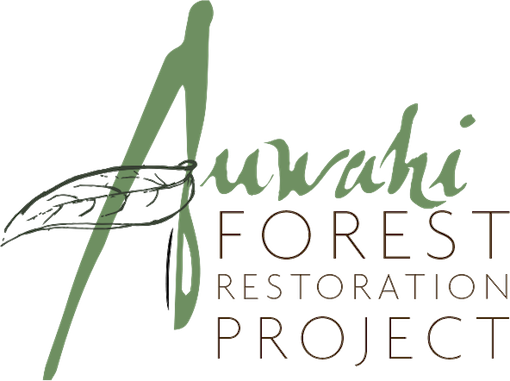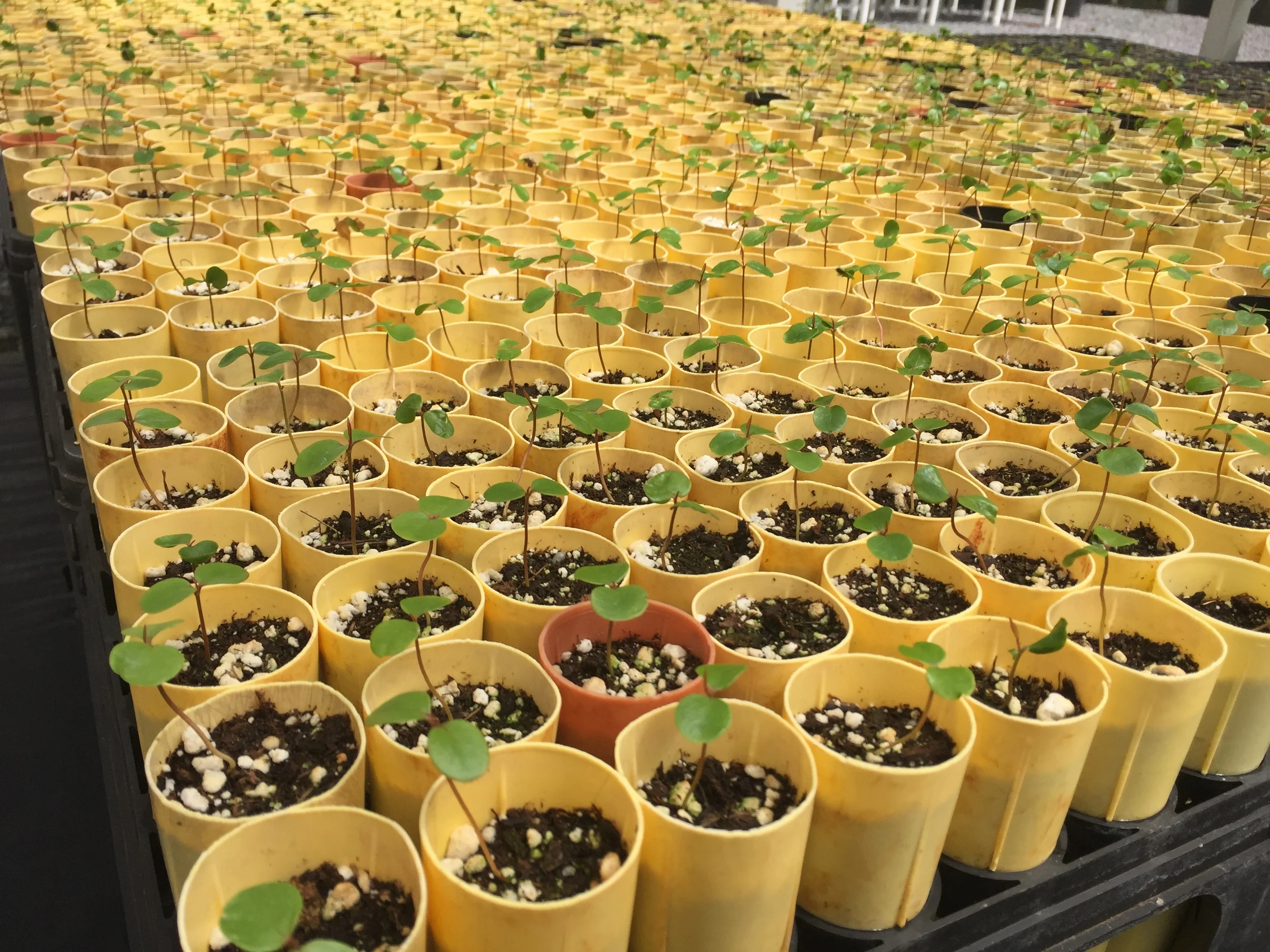In terms of ecological restoration, the Auwahi restoration methodology involves sequentially excluding grazing animals, controlling mats of invasive grass (Cenchrus clandestinus), and planting closely spaced, rapidly growing native shrubs. Following 12 years of restoration, non-native species cover declined from 87% to 2%, while native species increased from 20% to 98%. Typically, tree seedlings outplanted at Auwahi have extremely high survivability (ca. 95% for common species) and grow rapidly.
Perhaps more impressively in terms of restoration goals, natural recruitment of tree seedlings previously absent for as much as a century has been documented in over two-thirds of Auwahi’s native tree species. The recovering forest is now self-sustaining over increasingly large areas with continued recruitment of seedlings and incremental development of more complex forest structure.
These results highlighting the remarkable degree of native forest recovery at Auwahi forest, were recently published in the scientific journal Pacific Science (Dry forest restoration and unassisted native tree seedling recruitment at Auwahi, Maui. Medeiros, von Allmen, and Chimera, 2014).

